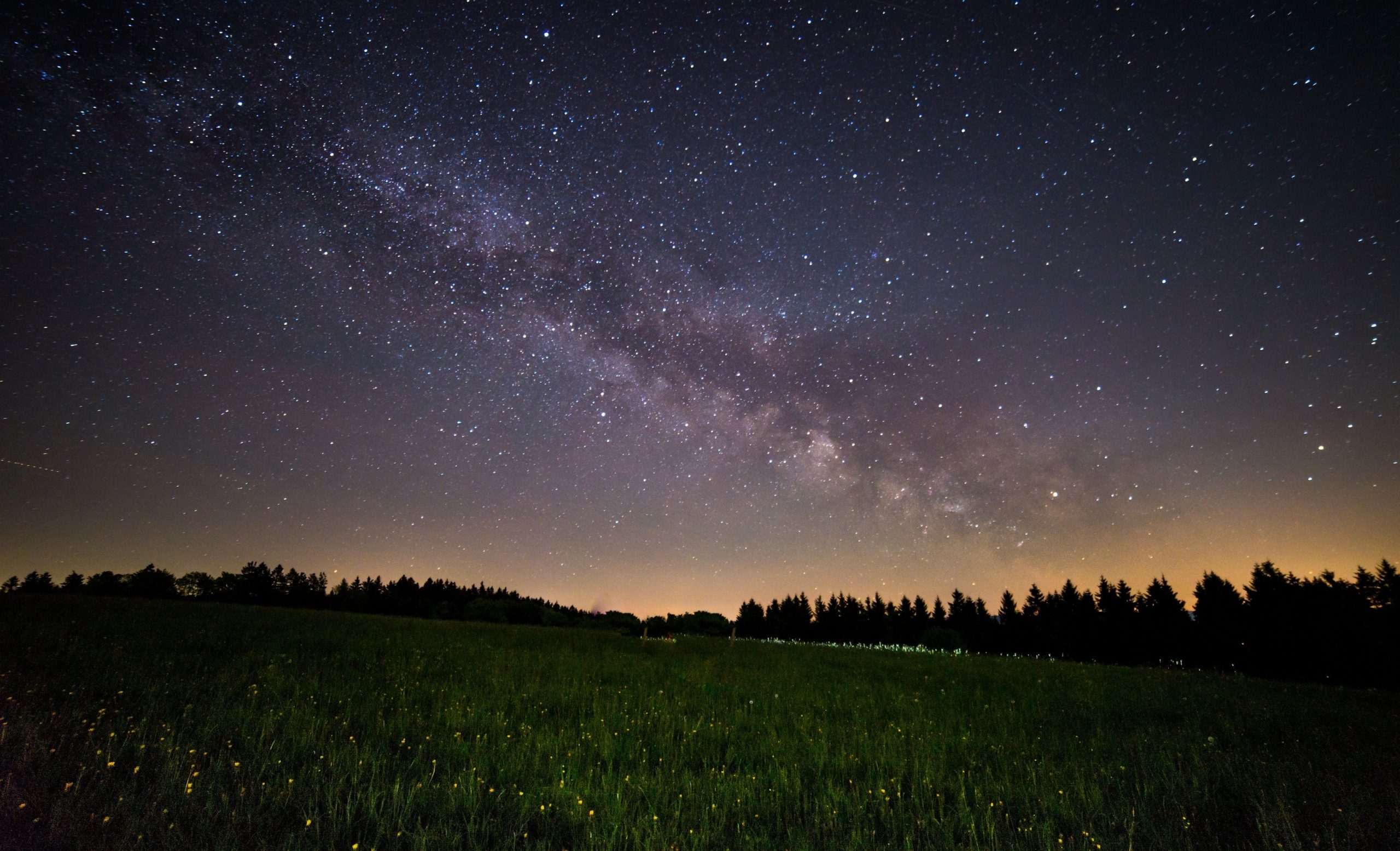There are many Cree stories about the stars in the night sky. Jacquelyn Cardinal shares one of her family’s cherished stories.
Since time immemorial, the colder months have been a time for when the lands in and around Edmonton would come alive with storytelling. Our nehiyaw , or Cree, elders have told my brother and I that an important part of this storytelling tradition is in looking up at the sky to where our people believe our stories are kept among the stars.
To get your storytelling season started, I wanted to share one story that our family has come to cherish: atima atchakosuk , or the “Dog Stars.” This myth is a nehyiaw tale about the grouping of seven stars that most Canadians know as Ursa Minor , or the little dipper, and how they came to be.
Long ago, people didn’t have dogs. Children played alone, elders carried heavy loads by themselves, and hunters didn’t have help tracking game. When settlements were attacked by wildlife or other groups, the people would always be surprised and dismayed.
Over time, the wolf, coyote, and fox — relatives of the humans — took notice and were concerned. But what could they do to help?
To begin, they called together a council where the animals talked for many days and nights. By the end of their discussion, they understood that humans needed companions and decided that they would help them by sending two of their own pups to all four directions of humankind to live with the people.
Over many generations, the pups of the coyotes, wolves, and foxes adapted to life with the humans and began to flourish alongside them in play and work. Children played with furry friends, elders had help hauling heavy loads to where they needed to be, and hunters were more successful in providing for their communities thanks to the noses of their new hunting partners.
To honour their sacrifice, the creator honoured the wolves, foxes, and coyotes by putting a reminder in the stars. First with mahikan atchakos or the “Wolf Star” which you may already know as Polaris. Second with the mêstacâkan atchakos or “Coyote Star”, third the mahkesîs atchakos or “Fox Star”, and finally the four atima atchakosuk or “Dog Stars” which were the pups that were sent to the people.
On a clear night this winter, see if you can catch a glimpse of mahikan atchakos anchoring the leash of the atima atchakosuk with the help of mêstacâkan atchakos and mahkesîs atchakos.
Interested in learning more about nehiyaw astronomy? There are a few options for continuing your learning. First, Wilfred Buck, a knowledge keeper from Opaskwayak Cree Nation. has written a fantastic book called “Tipiskawi Kisik: Night Sky Star Stories” which you can find at your favourite book stores. But if you’re looking for a more immersive experience, the planetarium-ready feature film produced by Edmonton’s Telus World of Science called “Legends of the Northern Sky” plays regularly at the Zeidler Dome.
